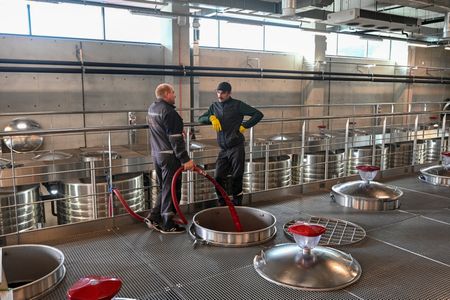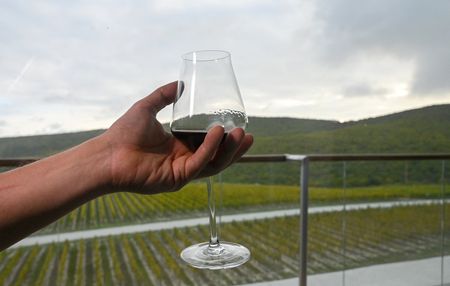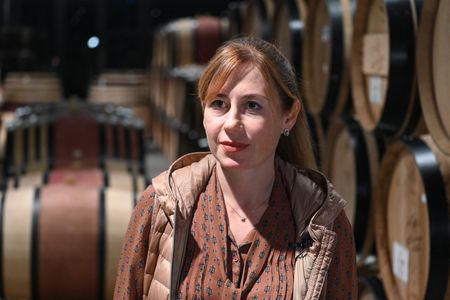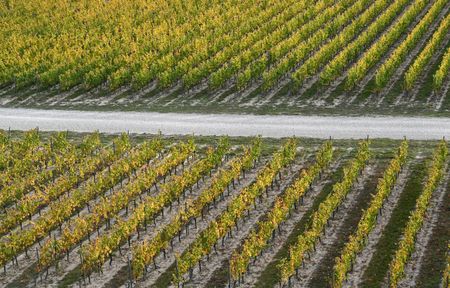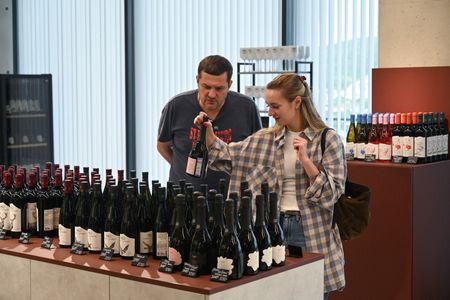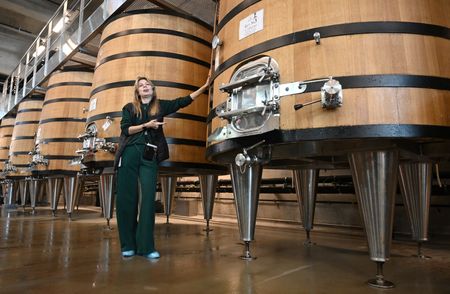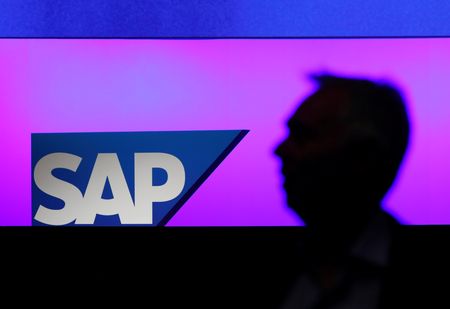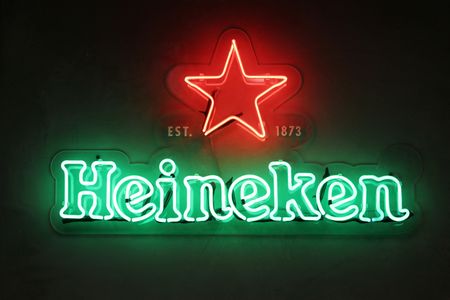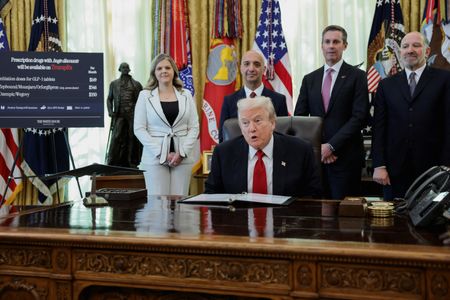ANAPA, Russia (Reuters) -Once dominated by French Burgundy and Italian Barolo wines, Russia’s supermarket shelves are now stocked with an array of domestic vintages as Western sanctions linked to the war in Ukraine push consumers toward local vineyards.
Sanctions imposed after President Vladimir Putin sent troops into Ukraine in early 2022 have reshaped Russia’s consumer habits, driving up prices of foreign wines and narrowing brand availability of imports.
Russian wine sales have surged to make up around 60% of the market, up from about 25% 10 years ago.
“Russian wine has gained a very high share of the Russian market,” said Yury Yudich, the head of the Federation of Restaurateurs and Hoteliers’ committee on Russian winemaking, citing higher taxes on “unfriendly countries.”
“Gradually the market began to change, and wine prices began to rise. Imported wines have probably increased (in price) by 30-40%,” he said, though Yudich added that consumers were still “getting used to” local wine flavors.
RUSSIAN WINE SALES ‘ARE STILL INCREASING’
In Moscow supermarkets, Russian, Georgian and Armenian wines dominate where previously French, Italian and South American brands took pride of place.
Western countries have imposed more than 25,000 different sanctions on Russia since Moscow annexed Crimea in 2014, with the lion’s share coming after the Ukraine invasion in 2022.
Grapes have been grown around the Black Sea for thousands of years but the travails of revolution, civil war and later Soviet anti-alcohol campaigns, particularly under Mikhail Gorbachev in 1985, destroyed many Russian vineyards.
But as the economy emerged from the decade of chaos that followed the 1991 fall of the Soviet Union, some pioneering investors began to buy up land in southern Russia and bring back top-level vintners from France and Italy.
At the Côte Rocheuse winery, nestled near the Black Sea, the shift in Russia’s wine market is clear.
“We began selling wines in 2022, and that same year we opened to tourists. Since then, we have been increasing production volumes every year, and sales are still increasing,” said chief vintner and production director Irina Yakovenko. “However, we have a limit on both vineyards and winemaking capacity – 500,000 bottles per year.”
‘OUR WINES ARE THE BEST’
The Côte Rocheuse winery cultivates classic European grape varieties – Merlot, Cabernet Sauvignon, Pinot Noir, Chardonnay – as well as Krasnostop Zolotovsky, a native Russian grape from the Rostov region.
Despite relying on mostly French and Italian equipment, the wines are distinctly local, shaped by Russian soil and climate.
Putin has repeatedly touted Russia’s economic endurance under so many sanctions and has urged companies and officials to find a way to evade sanctions – which he casts as illegal and unjustified.
“I want other people, mainly our children, to see this, so they don’t buy Italian or German wines, but ours,” Galina Romanova, a tourist at the winery, told Reuters. “Our wines are the best.”
(Reporting by Artem Storonov and Alexander Paramoshin; Writing by Adam Jourdan; Editing by Mark Porter)

